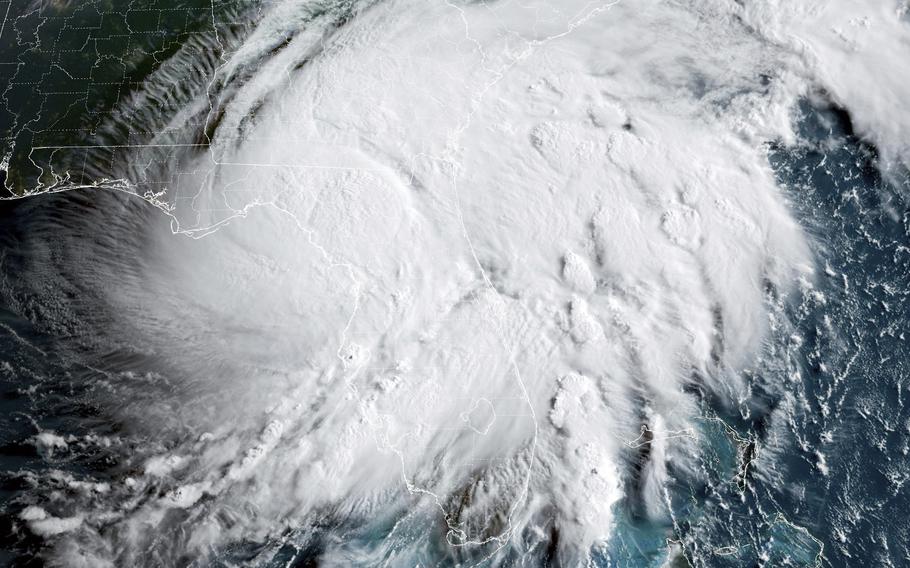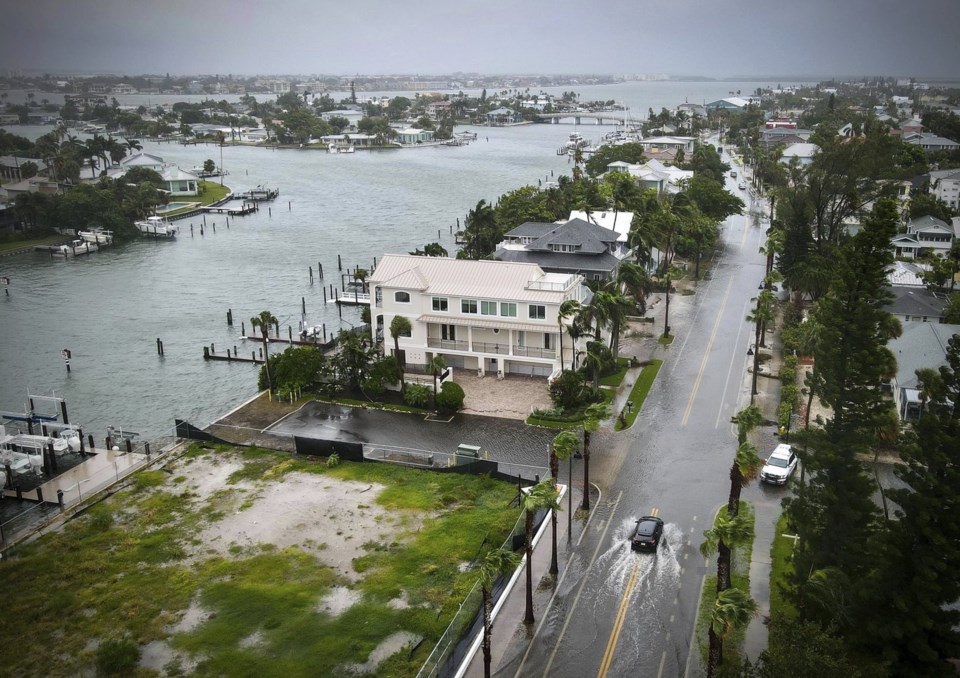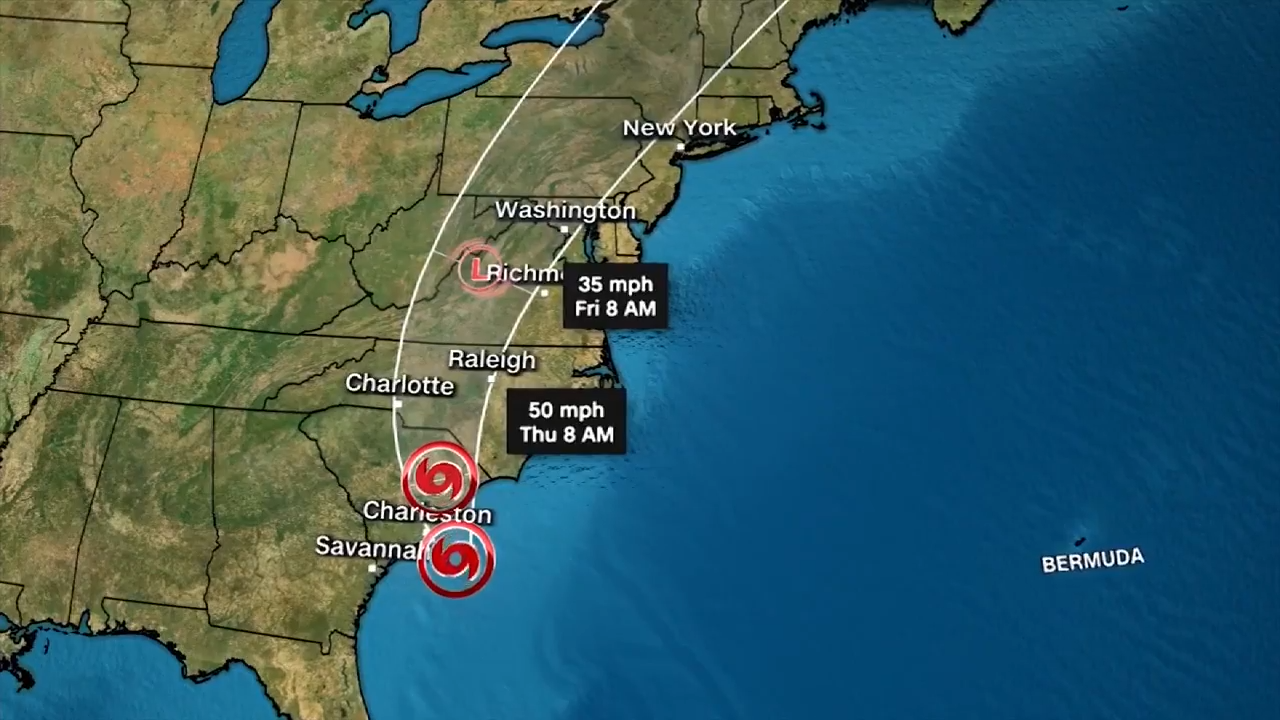Tropical Storm Debby: Tropical Storm Debby Hurricane

Tropical Storm Debby, a significant weather event in the history of the Atlantic hurricane season, brought heavy rains and widespread flooding to parts of the United States in June 2012. Its impact extended from the Southeast to the Mid-Atlantic, causing substantial damage and disrupting daily life for millions.
Formation and Development
Tropical Storm Debby originated from a tropical wave that emerged off the coast of Africa on June 16, 2012. As the wave moved westward across the Atlantic, it gradually organized and strengthened, developing into a tropical depression on June 20. The depression intensified further, becoming Tropical Storm Debby on June 21.
Timeline of Debby’s Path
- June 21: Tropical Storm Debby formed in the central Atlantic Ocean. It was initially a weak storm, with maximum sustained winds of 40 mph.
- June 23: Debby continued to strengthen and reached hurricane strength, with maximum sustained winds of 75 mph. However, it weakened back to a tropical storm later that day.
- June 25: Debby made landfall near Panama City Beach, Florida, as a tropical storm with maximum sustained winds of 60 mph.
- June 26: Debby moved inland across Florida and weakened to a tropical depression. It continued to produce heavy rainfall across the southeastern United States.
- June 27: Debby emerged back over the Atlantic Ocean near Charleston, South Carolina, as a tropical depression. It dissipated shortly after.
Impact of Tropical Storm Debby
- Flooding: Debby’s heavy rainfall caused widespread flooding in Florida, Georgia, Alabama, and the Carolinas. The storm dumped over 20 inches of rain in some areas, leading to overflowing rivers and streams, as well as extensive damage to homes and businesses.
- Coastal Erosion: Debby’s strong winds and heavy surf caused significant coastal erosion, particularly along the Florida panhandle. Beaches were severely damaged, and several homes were destroyed or damaged due to the storm surge.
- Power Outages: Debby’s strong winds caused widespread power outages, affecting hundreds of thousands of people in the affected areas. Many residents were left without electricity for several days.
- Casualties: While Debby was not a major hurricane, it still caused several deaths. Most of the fatalities were related to drowning or vehicle accidents during the storm.
Historical Accounts and Eyewitness Testimonies
“It was like a river running down the street. I’ve never seen anything like it,”
said one resident of Tallahassee, Florida, describing the flooding caused by Debby.
“The wind was howling, and the rain was coming down in sheets. It was scary,”
shared another resident of Panama City Beach, Florida, recounting their experience during the storm’s landfall.
The impact of Tropical Storm Debby served as a reminder of the destructive power of even seemingly weak storms, highlighting the importance of preparedness and timely response to weather emergencies.
Debby’s Meteorological Characteristics

Tropical Storm Debby, like all tropical cyclones, was born from a complex interplay of atmospheric conditions. Its formation and intensification were driven by a specific set of meteorological factors that influenced its unique characteristics.
Atmospheric Conditions Contributing to Debby’s Formation and Intensification
Tropical cyclones require specific atmospheric conditions to form and intensify. These conditions include:
- Warm ocean waters: Tropical cyclones draw their energy from the heat and moisture released as warm, moist air over the ocean surface rises and condenses. Debby formed over the warm waters of the Atlantic Ocean, where temperatures were above 80°F (26.5°C) at the surface. This provided the necessary energy for the storm’s development.
- Low vertical wind shear: Wind shear refers to the change in wind speed and direction with height. Low vertical wind shear is crucial for tropical cyclone development because it allows the storm’s thunderstorms to organize and intensify. Debby formed in an area with relatively low wind shear, which allowed its thunderstorms to grow vertically and create a more organized structure.
- Pre-existing weather disturbance: A pre-existing weather disturbance, such as a tropical wave or a low-pressure area, can provide the initial spin for a tropical cyclone. Debby formed from a tropical wave that moved westward across the Atlantic Ocean. This wave provided the initial rotation that helped the storm organize and intensify.
Debby’s Unique Meteorological Features
Debby exhibited several unique meteorological features that distinguished it from other tropical storms and hurricanes in the region:
- Wind speeds: Debby’s maximum sustained wind speeds reached 60 mph (95 km/h), classifying it as a tropical storm. While this is considered a relatively weak storm, it can still cause significant damage, especially in coastal areas.
- Rainfall patterns: Debby produced heavy rainfall, with some areas receiving over 10 inches (25 cm) of rain in a short period. This rainfall led to widespread flooding, particularly in low-lying areas. Debby’s rainfall patterns were influenced by its slow movement, allowing for extended periods of heavy precipitation over the same regions.
- Storm surge potential: While Debby was not a hurricane, it still had the potential to generate a storm surge, especially in areas with shallow water and high tides. Storm surge is a rise in sea level caused by the storm’s winds pushing water towards the shore. Debby’s slow movement and the potential for high tides contributed to the risk of storm surge in coastal areas.
Comparison of Debby’s Characteristics with Other Tropical Storms and Hurricanes
Debby’s characteristics can be compared and contrasted with other tropical storms and hurricanes in the region:
- Hurricane intensity: Debby’s wind speeds were significantly lower than those of a hurricane, which require sustained wind speeds of at least 74 mph (119 km/h). Hurricanes are typically associated with much stronger winds, higher storm surge potential, and heavier rainfall.
- Track and movement: Debby’s track was relatively slow and erratic, allowing for prolonged periods of heavy rainfall and the potential for significant flooding. Some hurricanes, on the other hand, move much faster, leading to shorter periods of intense weather but potentially greater damage due to their faster wind speeds.
- Impact and damage: Debby’s impact was primarily characterized by flooding and localized damage due to its heavy rainfall and slow movement. Hurricanes, however, can cause much more widespread and severe damage, including destruction of infrastructure, power outages, and coastal erosion.
Role of Climate Change in Influencing the Intensity and Frequency of Tropical Storms Like Debby
The role of climate change in influencing the intensity and frequency of tropical storms is a complex and ongoing area of research. Some studies suggest that climate change may lead to:
- Increased intensity: Warmer ocean temperatures, a direct consequence of climate change, can provide more energy for tropical cyclones to develop and intensify. This could lead to more hurricanes reaching higher categories with stronger winds and heavier rainfall.
- Increased frequency: While the overall number of tropical cyclones may not necessarily increase, climate change could influence the frequency of intense storms. This means that even if the total number of storms remains similar, the proportion of stronger hurricanes could increase.
Debby’s Impact and Response

Tropical Storm Debby, despite being a relatively weak storm, left a significant mark on the affected regions. Its impact was felt across various sectors, leading to economic losses, social disruption, and a surge in emergency response efforts. This section delves into the consequences of Debby’s passage, the response mounted by various authorities, and the effectiveness of preparedness measures.
Economic Consequences
The economic impact of Tropical Storm Debby was primarily felt in the agricultural sector, with widespread crop damage and livestock losses. The storm’s heavy rains caused flooding in farmlands, leading to crop failures and livestock deaths. The tourism industry also suffered, with beach closures and cancellations of events due to storm-related disruptions. Additionally, infrastructure damage, including roads, bridges, and power lines, resulted in significant repair costs.
Social Consequences
Tropical Storm Debby’s social impact was characterized by displacement, disruptions to daily life, and psychological distress. Many residents were forced to evacuate their homes due to flooding and structural damage. The storm also caused power outages, affecting communication and access to essential services. The emotional toll of the storm, including anxiety, stress, and grief, was also a significant concern, especially for those who lost loved ones or suffered significant property damage.
Response Efforts, Tropical storm debby hurricane
In the aftermath of Tropical Storm Debby, local, state, and federal authorities mobilized their resources to address the immediate needs of affected communities. Local emergency responders provided rescue and evacuation services, while state and federal agencies coordinated relief efforts, including the distribution of food, water, and shelter.
Effectiveness of Preparedness Measures
The effectiveness of preparedness and mitigation measures implemented before and during Tropical Storm Debby varied. Some areas, with well-established evacuation plans and robust infrastructure, experienced minimal damage and disruption. However, in other areas, lack of preparedness and inadequate infrastructure led to significant losses and challenges in responding to the storm’s impact.
Community Resilience and Support
Despite the challenges posed by Tropical Storm Debby, communities exhibited remarkable resilience and support. Neighbors helped neighbors, volunteers organized cleanup efforts, and charitable organizations provided aid to those in need. This spirit of community unity played a crucial role in the recovery process, demonstrating the power of human compassion and collective action in the face of adversity.
Tropical storm debby hurricane – Tropical Storm Debby, man, it was a real doozy! Like, imagine the power of a thousand angry squirrels combined with the fury of a thousand-year-old grandma who lost her knitting needles. And while we’re on the topic of powerful women, let’s talk about Gwen Walz , the First Lady of Minnesota, who’s been a total rockstar in her own right.
Anyway, back to Debby, that storm was like a giant, wet, angry burrito.
Tropical Storm Debby, eh? Imagine the chaos, the wind howling like a banshee, the rain lashing down like a thousand angry squirrels. But hey, at least we can take comfort in the fact that while the world is going bat-shit crazy, there’s a whole new way to move money, like with ripple xrp.
Maybe not as fast as the wind, but definitely smoother than a flooded street. So yeah, Debby’s a pain, but hey, at least we’ve got Ripple to keep our finances in check.
